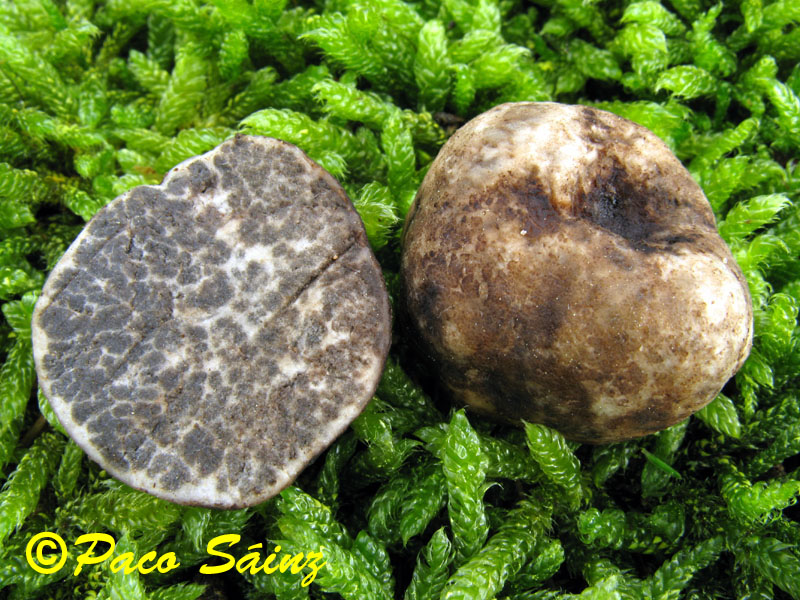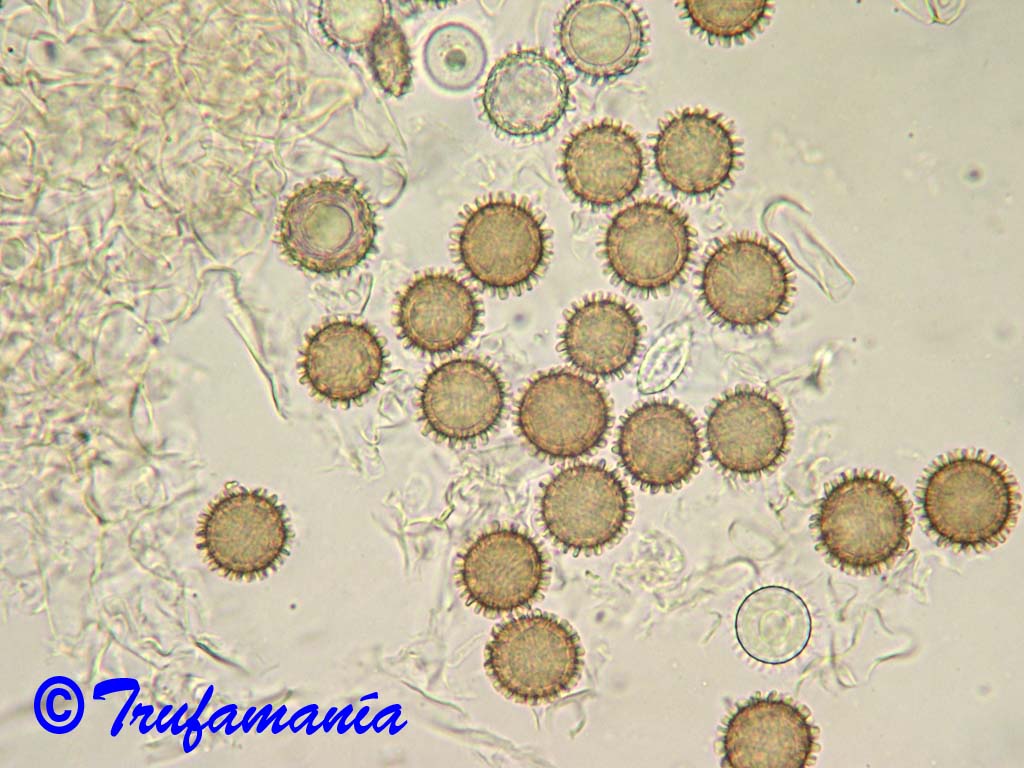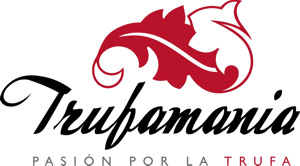TERFEZIA GRISEA Bordallo, V. Kaounas & Ant. Rodr.
Phytotaxa 230 (3): 241 (2015)

(Click on the picture to see more images)
Macroscopic characters:
Ascomata: hypogeous to partially emergent at maturity, solitary, 1–2,5 cm in size, tuberiform, subglobose, often conical sterile base, initially pale rusty, in places spotted whitish, later brown, rusty or ochraceous brownish, in places blackish brown to almost black, smooth.
Peridium: 200–400 µm thick, not separable from gleba, poorly delimited, pseudoparenchymatous, composed of subglobose cells, hyalines and thin-walled in the innermost layers, yellowish and with thicker walls in the outermost layers.
Gleba: solid, fleshy, succulent, whitish with greyish pockets at first, maturing to blackish gray pockets of fertile tissue separated by whitish, sterile veins.
Odour: faint, no distinctive
Taste: mild.
Distibution, Habitat and Season:
Terfezia grisea grows in alkaline, sandy soils, in a coastal pine forest in Greece, in grassland areas without trees in Spain, associated with Helianthemum spp., from March to June in Spain, March to April in Greece.
Notes:
Terfezia grisea is a spiny-spored Terfezia species characterized by its ochraceous brownish, almost black peridium, blackish gray gleba and growing in alkaline sandy soils associated with Helianthemum spp. T. albida and T. olbiensis also grow in alkaline but clayey soils. Moreover, T. albida, although associated with Helianthemum spp., has larger ascomata, white peridium, grayish green gleba and spermatic odour. And for its part, T. olbiensis has larger ascomata and smaller spores than T. grisea.

(Click on the picture to see more images)
Microscopic characters:
Asci: nonamyloid, subglobose to ovate, sessile or short-stipitate, 60–80 x 50–60 µm, walls 1 µm thick, with 6–8 irregularly disposed spores, randomly arranged in the gleba.
Ascospores: globose, (18–)19–21(–22) µm diam (median = 21 µm) including ornament, (15–)16–17(–18) µm (median = 16 µm) without ornament, hyaline, smooth and uniguttulate at first, by maturity yellow ochre and ornamented with conical, sometimes truncated, separate, blunt spines, 2 –3 µm long, 1–2 µm wide at the base.
| Antonio Rodríguez trufamania@gmail.com antonio@trufamania.com |



